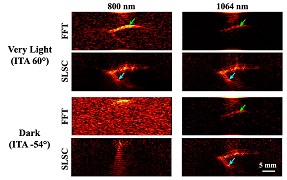Finding the right shades of urban greenery
Urban green space is a crucial element in modern city planning. The preservation and maintenance of green spaces is important for several reasons.1 From an ecological point of view, green areas are remnant habitats for plant species and wildlife in urban environments. Urban green stabilizes micro-climatic air circulation and keeps average air temperature to a moderate level. From an aesthetic point of view, the combination of buildings and green space implies quality of life and attractiveness. As such, it significantly contributes to the well-being of citizens. Politicians and city planners thus need detailed, spatially disaggregated, up-to-date information about it.2
Aerial photographs and satellite image data provide detailed information on the Earth's surface, though in a flat, horizontal representation. The resulting 2D maps are routinely used in city planning, but they may not directly reflect the ‘green feeling’ of the citizens living there.3 It is challenging to explicitly consider the direct impression of greenness ‘on the ground.’ For instance, a green area coverage of 40% may be perceived much more intensely if it mainly consists of tall vegetation and the nearby buildings are predominantly small family houses. The same portion of green may appear less appealing if mainly composed of lawns around tall buildings. Urban green classifications and analyses based on remote sensing data typically neglect the subjective perceptions of citizens. We have developed a new approach4 that combines this remote sensing analysis with quantitative data obtained from a socio-geographic survey to take into account the impression of greenness.
The city council of Salzburg, Austria, envisions a strategy of sustainable city development. This could be achieved by maintaining the current city limits and pursuing densification and closure of existing building gaps as a primary goal. Alternatively, these gaps could be preserved by allowing the urban area to expand. To monitor either development, a repeatable, objective approach that uses current technology and is backed-up by public opinion is required. Our approach is to combine automated, high-resolution image analysis with an interview-based assessment of subjective green impression.
We first designed a cognitive network that offers a flexible and transparent classification scheme for various urban green structure types. The network enables users to interact with the scheme and serves as a graphical tool for communication and interaction with users or stakeholders. It generates pan-sharpened5 QuickBird imagery segments using a strictly hierarchical, multi-resolution segmentation approach.6 Based on the results of classification, we calculated an overall green index (GI) that corresponds to the percentage of classified green in any spatially aggregated unit (e.g., enumeration blocks or regular cells).
From an interview-based survey of 128 respondents, ranks between 0 and 5 were obtained for each of the 11 green structure types used in the classification. We used this information to arrive at a weighted green index,4 GIw, which represents an averaged green impression per cell. The interview results were combined with the image classification as follows. First, percentages of each structure type in relation to the total green area were calculated within each unit. Second, ranks assigned to the structure types were normalized into an interval from 0 to 1 to obtain weights. The percentages of each type within a unit were then multiplied by the assigned weight to derive, as an intermediate measure, GIw0 (see Figure 1). Finally, to derive GIw, GIw0 values for each structure were summed within each unit and then re-transformed to the original range of rankings. GIw, like GI, can be calculated for any spatial reference unit, since both are based on percentages of green and their respective importance.
In this study GIw was calculated for a mosaic of 50m×50m raster cells (see Figure 2). In sum, the GIw of 4,692 raster cells covering the city of Salzburg ranged from 2.1 to 4.3. We visualized4 our results by extruding the raster cells in a 3D software environment according to their values of GIw (see Figure 3).
We have developed a transferable and transparent, yet flexible method for quantifying green structures. It combines results from automated image classification and spatial analysis with quantitative data obtained from a socio-geographic survey. This allowed us to identify areas within the city of Salzburg that can be considered ‘greener’ than others. With our method, some areas that have a low fraction of green were classified as greener since the type of green was taken into account. The approach may be used for urban and regional planning, as it provides monitoring tools for a differentiated analysis of gain or loss in urban green space.
We thank Mag. Josef Reithofer from the Salzburg City Council for critical statements and stimulating discussions. We also appreciate the co-operation with our partners from iSpace and the Institute for Integrative Urban and Regional Development.






